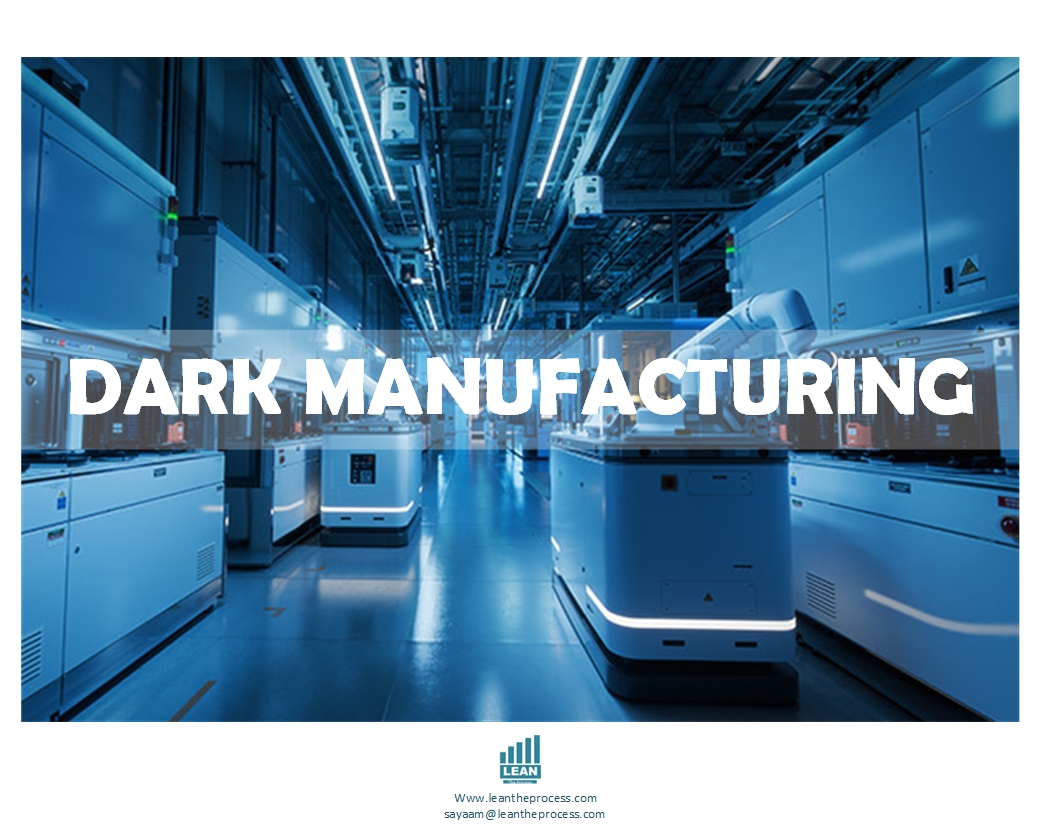Background
The modern industrial automation sector has introduced dark manufacturing which produces results through unstaffed factories with turned-off lights but little media attention. Dark manufacturing represents complete automation in operations which function without any human involvement. Dark manufacturing finds its origins in the actual absence of illumination because machines do not require visual acuity which enables factories to decrease their power bills while adopting total autonomous industrial processes. Modern industrial plants throughout the world already practice dark manufacturing as a concept that advances automated production techniques. Systems equipped with these tools complete complex operations which include welding and machining in addition to quality control and autonomous decision-making functions without human supervision. The system performs without any human limitations since robots never fatigue and they remain focused on their tasks. The workforce delivers outstanding precision alongside complete consistency as they respond continuously throughout all time periods and days throughout the year. The adoption of dark manufacturing practices leads factories to produce more product units while decreasing mistakes so their operational performance surpasses traditional human labor systems.

Why Dark Manufacturing ??
The advancement toward dark manufacturing involves more than machine automation of human tasks. This producing method stands as an essential change in designing factory operations including management and productivity optimization. The present-day factory layouts created for human workers need a complete redesign to achieve fluid machine integration. The placement of autonomous mobile robots (AMRs) takes over tasks previously done by forklifts in production floor spaces. Real-time data interpretation with artificial intelligence leads to automated production line rerouting and automated maintenance predictions as well as faultless material time-delivery management.
Although dark manufacturing generates numerous advantages it faces various obstacles during implementation. To establish operations completely controlled by computers operators need substantial initial investments to deploy technological systems and construction elements alongside integration procedures. Proper cybersecurity measures must be enforced in these connecting systems because a single vulnerability would stop all operations or expose crucial company data to theft. The transition has brought forward several vital social together with ethical matters. People who perform manual tasks will face consequences as machines fill more positions within the workforce. The debate exists about whether robotic automation destroys jobs but it also introduces new careers which include programming and system maintenance and remote operations and data analysis work. Strategic initiatives for workforce development combined with skill retraining need to back the transformation that challenges human involvement in manufacturing operations.
Dark Factories
A growing number of worldwide manufacturing leaders are implementing dark factories as demonstrated by their success stories which validate this approach. Fanuc serves as one of the most well-known demonstrations of this production approach because it operates in Japan as a robotics giant company. The Japanese facility of Fanuc maintains lights-out production which enables robots to manufacture additional robots automatically. The factory functions independently for multiple weeks without requiring human personnel. The self-perpetuating automation system has two benefits: increased operational speed and proof of concept for automatic systems that generate more automatic systems.
The Drachten facility of Philips serves as an exceptional example of automated manufacturing through its virtually automated electric razor assembly operations in the Netherlands. The assembly along with packaging functions of this facility depend mainly on robots together with high-speed conveyors. Software supervision and maintenance duties form the extent of human responsibilities in the system.
Summary
The adoption of dark manufacturing prompts inquiries about fundamental aspects of work-related philosophy and productivity-related evaluation. The advent of automated factory operation creates questions about the future life of traditional metrics for working hours and product value development. Businesses maintain their identity along with flexibility despite delegating many operations to machines. The fundamental issue remains how we will distribute the technological advancements’ advantages among a wide range of our society instead of permitting wealth accumulation among small groups. We now face social questions which will determine industry’s future direction for coming generations because we are approaching this silent industrial transformation.
Dark manufacturing represents the future evolution of intelligent manufacturing because of technological progress and thoughtful advancement. The adoption of dark manufacturing by increasing businesses will drive substantial transformations throughout our goods production process and supply chain operations and manufacturing contributions to global economic systems. Organizations that invest in dark manufacturing transition can benefit from an improved manufacturing performance with enhanced resiliency along with enhanced scalability. The situation requires immediate changes to industrial policy and training systems according to current requirements. Society faces an opportunity together with the challenge to take advantage of automation technologies while keeping the guiding human principles of every technological development.
